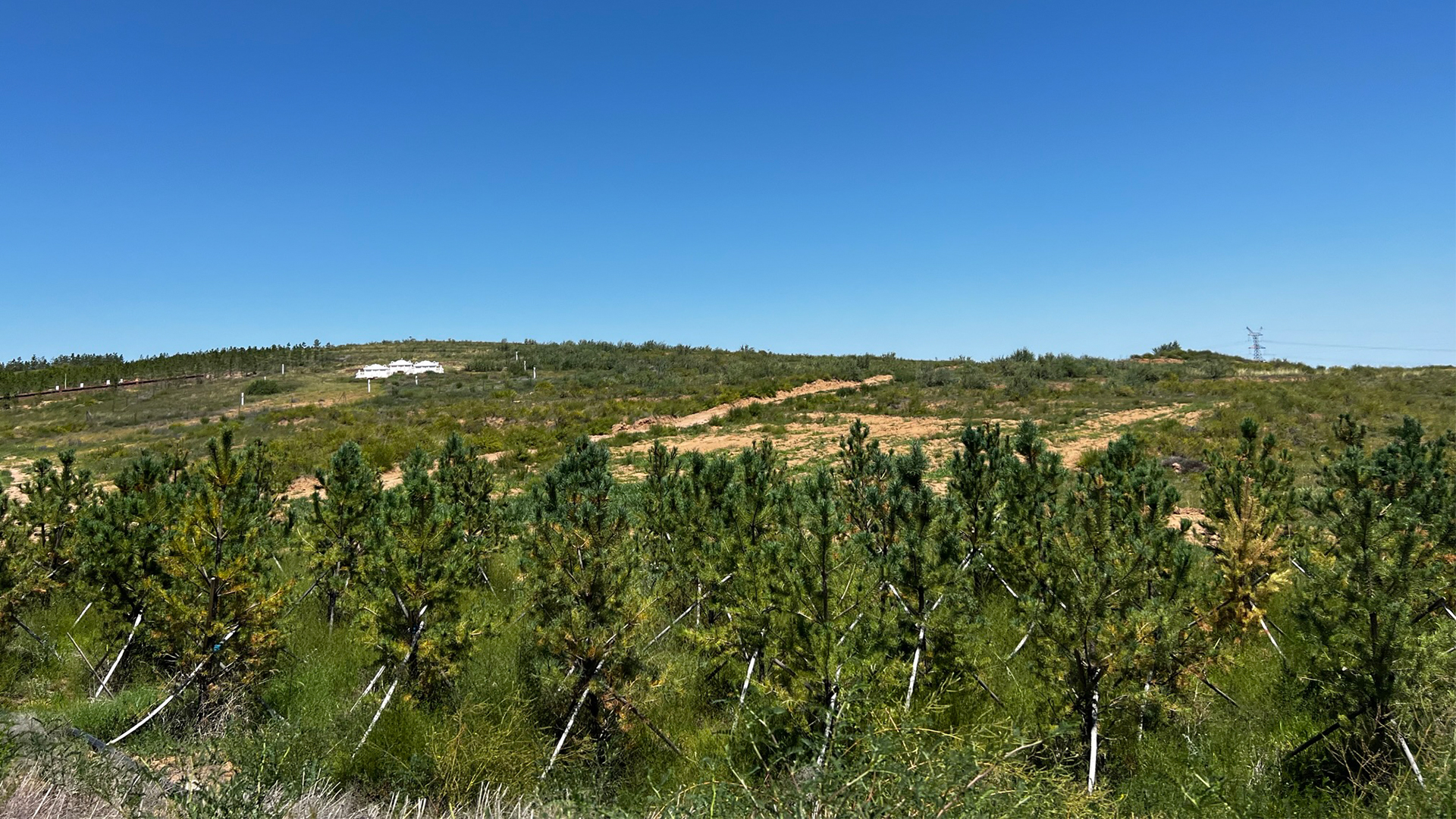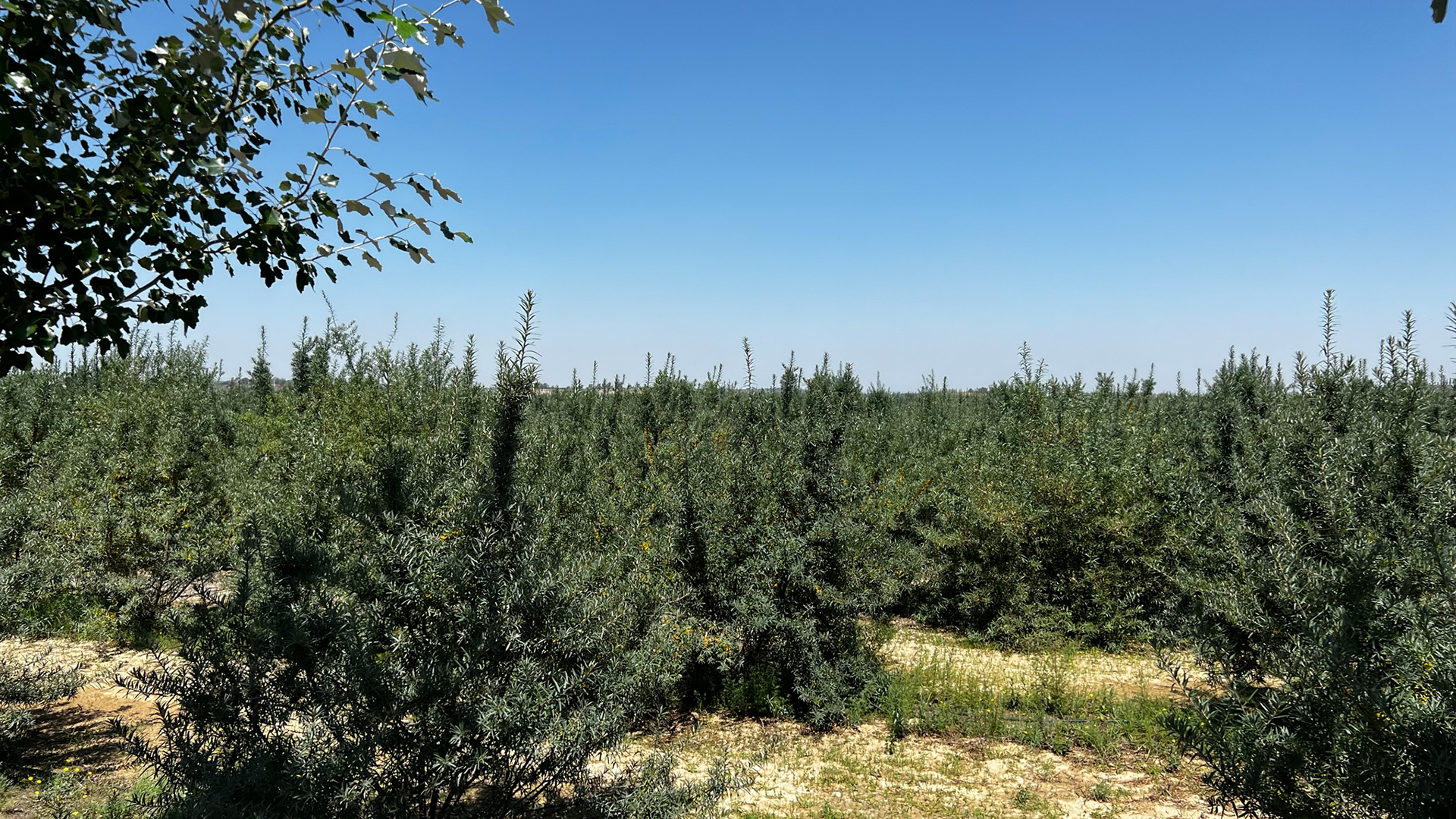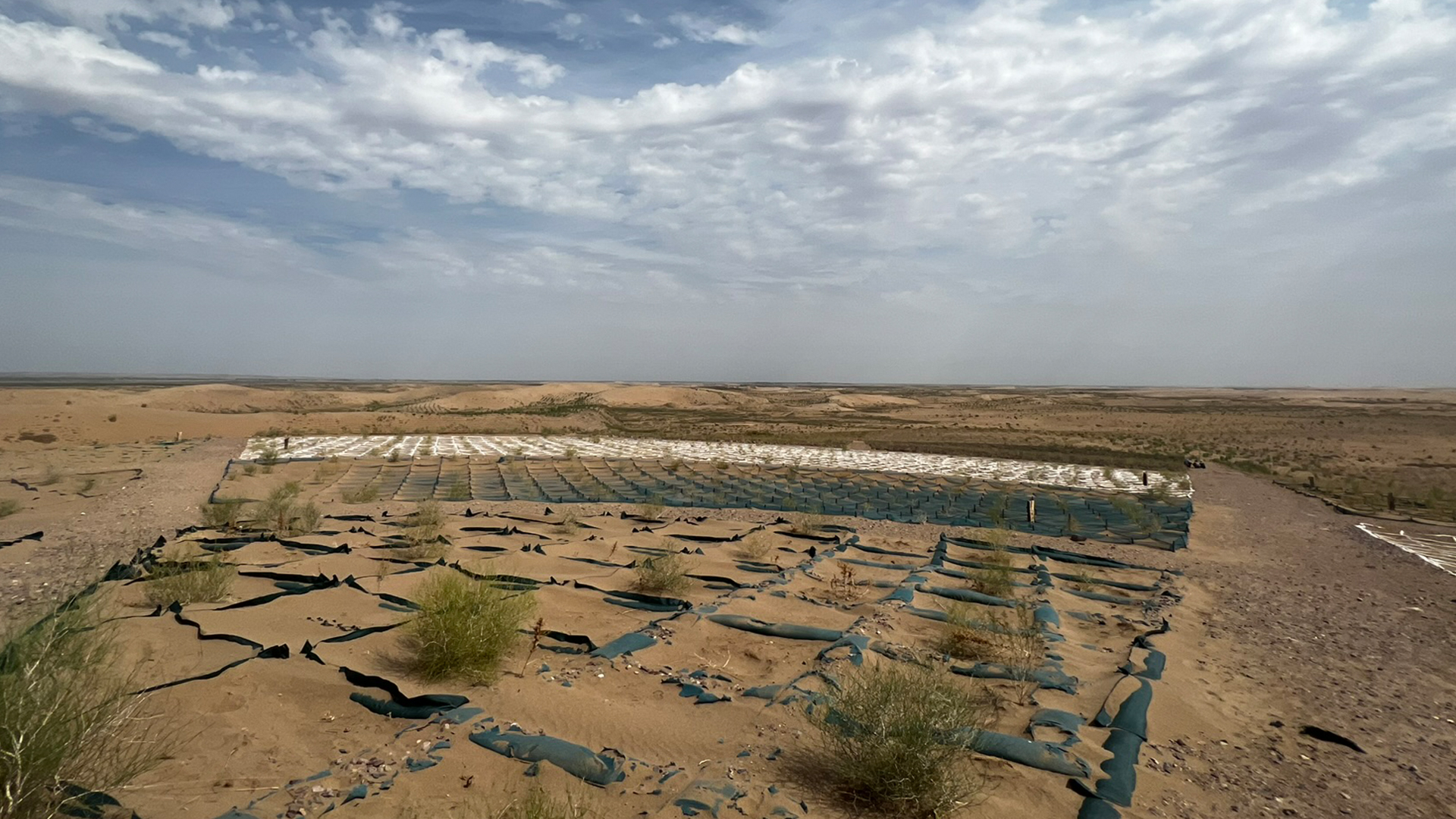China’s Three-North Shelterbelt Program, also known as the Sanbei Program, is one of the world’s largest ecological initiatives. Launched in 1978 and set to continue until 2050, this ambitious project aims to combat desertification and reduce the frequency of sandstorms by planting vast areas of trees or other resilient plant species across northern China’s arid and semi-arid regions. While its primary goal is environmental, the program has also had profound effects on agricultural production, making farming more sustainable and productive in an area long plagued by harsh weather conditions.

Source: AIIB staff, taken in Sanbei area of Inner Mongolia, China

Source: AIIB staff, taken in Sanbei area of Inner Mongolia, China
Protecting Farmland from Sandstorms
Sandstorms are a major threat to agriculture in northern China. These storms can strip away topsoil, damage crops, and make farming extremely challenging. The Sanbei Program has increased forest coverage and created natural barriers that trap wind-blown sand. It has been instrumental in reducing the frequency and severity of these sandstorms and their impact on farmland.
Analysis in an Asian Infrastructure Investment Bank (AIIB) working paper shows that expanding the Sanbei forest area correlates with a reduction in sandstorm days, with a more pronounced effect in villages that had higher sandstorm frequencies in the year 2000. To clarify this, consider two villages: Village A, which recorded 11 sandstorm days in 2000, and Village B, which had 20. Based on the interaction term, a 1,000-square kilometer (km2) increase in the Sanbei forest area would decrease sandstorm days in Village A by 14.5%, while in Village B, the reduction would be greater, at nearly 24.9%. Fewer disruptions from sandstorms may lead to increased agricultural activities, which are supported by further evidence in the forthcoming paper.
Keeping Farmers on the Land
Another impact from the Sanbei Program is its effect on rural labor markets. In areas where sandstorms were frequent, many farmers would migrate to urban areas in search of more stable work. However, with the reduction in sandstorms, farming has become a more viable and attractive occupation so that farmers may become more willing to stay.

Source: AIIB staff, taken in Sanbei area of Gansu Province, China
Based on the analysis, the program has led to a decrease in the share of outbound migrant workers in villages. The proportion of labor days devoted to crop production has increased dramatically, with some villages seeing a rise of 34.5 to 62.72 percentage points due to Sanbei forest expansion. This shift indicates that more people are staying in their villages to farm, stabilizing rural communities and ensuring a steady workforce for agricultural activities.
Boosting Agricultural Productivity
Perhaps the most direct impact on agriculture is the increase in total factor productivity (TFP). TFP measures how efficiently inputs like labor and capital are used to produce outputs. In simpler terms, it’s about getting more crops from the same amount of resources.
The Sanbei Program seems to have enhanced TFP for food crops (such as wheat, rice, and corn) and economic crops (such as cotton and tobacco). Higher productivity may translate to better food security and increased income for farmers, making agriculture a more attractive and sustainable livelihood.
Different Crops, Different Stories
While the overall impact on agriculture is positive, the program’s effects vary depending on the type of crop. Drought-resistant crops like wheat and maize have benefited significantly. For these crops, the program has reduced the labor input required per unit area. Specifically, labor input for wheat decreased by 3.67%, and for maize by 3.06%. This reduction in labor needs makes these crops more efficient to produce, allowing farmers to allocate their time and resources more effectively.
On the other hand, water-intensive crops like rice and soybeans have faced challenges. The expansion of forests may have increased evapotranspiration, the process by which water is lost from the soil and plants to the atmosphere. This has led to reduced soil moisture and surface runoff, intensifying competition for water resources. As a result, labor requirements for these crops have increased, as farmers need to invest more effort in irrigation and water management.
This highlights an important trade-off: while the program benefits agriculture overall, it may require additional strategies to manage water resources effectively, especially for water-dependent crops. Balancing these trade-offs will be key to ensuring that all types of agriculture can thrive under the program.
Conclusion
China’s Sanbei Program is a testament to the power of large-scale ecological initiatives to drive both environmental and economic benefits. By reducing sandstorms, retaining rural labor, boosting agricultural productivity and encouraging investment in modern farming equipment, the program has significantly enhanced agricultural production in northern China. However, it is important to recognize the trade-offs, particularly concerning water resources. As the program continues, it will be crucial to develop complementary policies that ensure sustainable water use and equitable benefits across different crop types.
This project presents a concrete example, where nature can be built as an infrastructure that protects local residents from adverse weather. Also, it serves as a model for other regions facing similar challenges, showing that with careful planning and investment, it is possible for local rural populations to benefit from nature infrastructure like Sanbei. For multilateral development banks, supporting such initiatives is not only about funding infrastructure but also about fostering sustainable development that benefits both people and the planet. As we look to the future, projects like the Sanbei Program will be essential in building resilient and prosperous communities.
An overview of Sanbei’s history and its impact on sandstorm in China was published in Chapter 4 of the report Asian Infrastructure Finance 2023: Nature as Infrastructure. The full analysis of how this project is not only greening the landscape but also boosting rural productivity and sustainable development, with a focus on its impact on agricultural production is published as an AIIB Working Paper.


